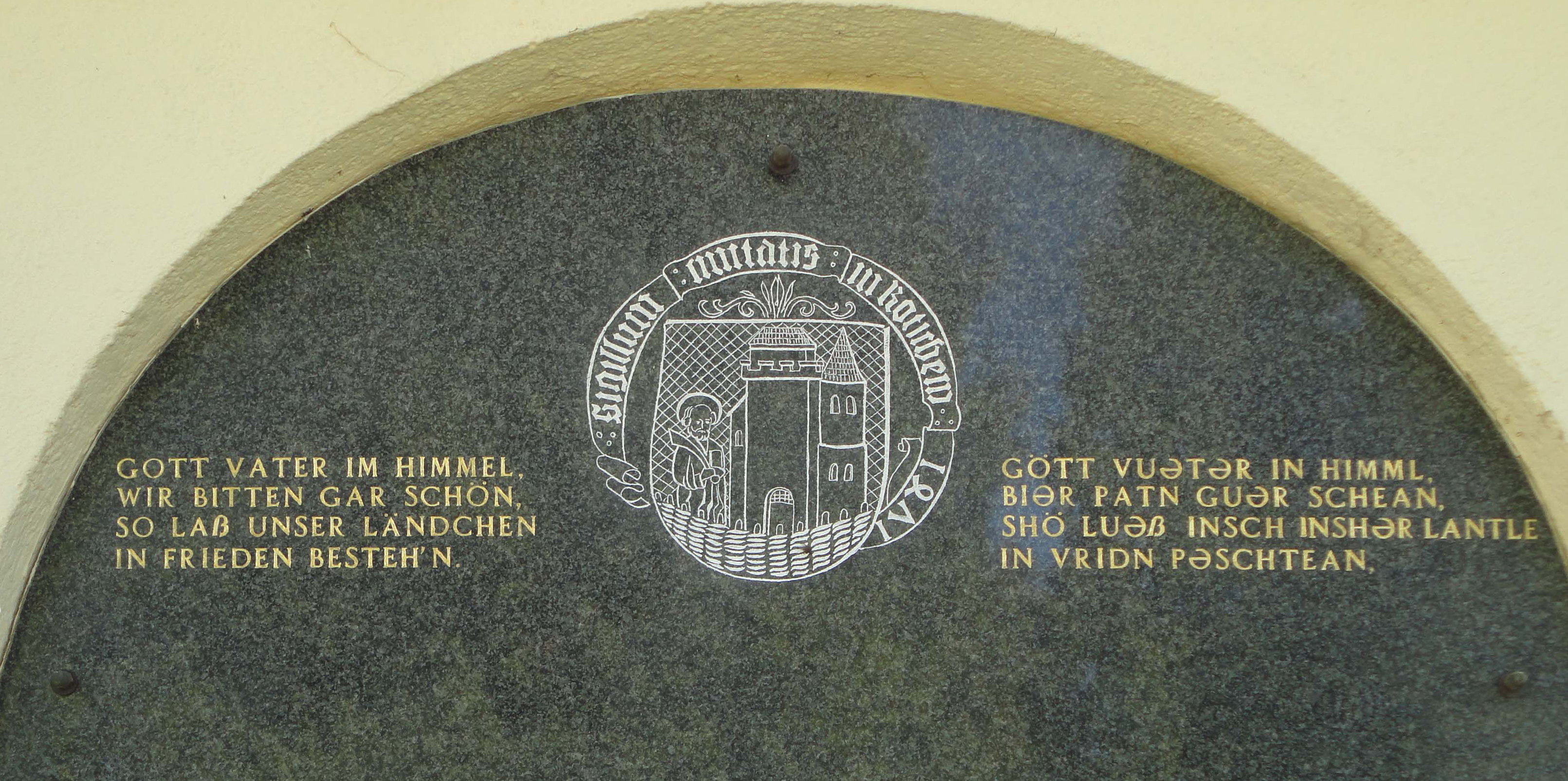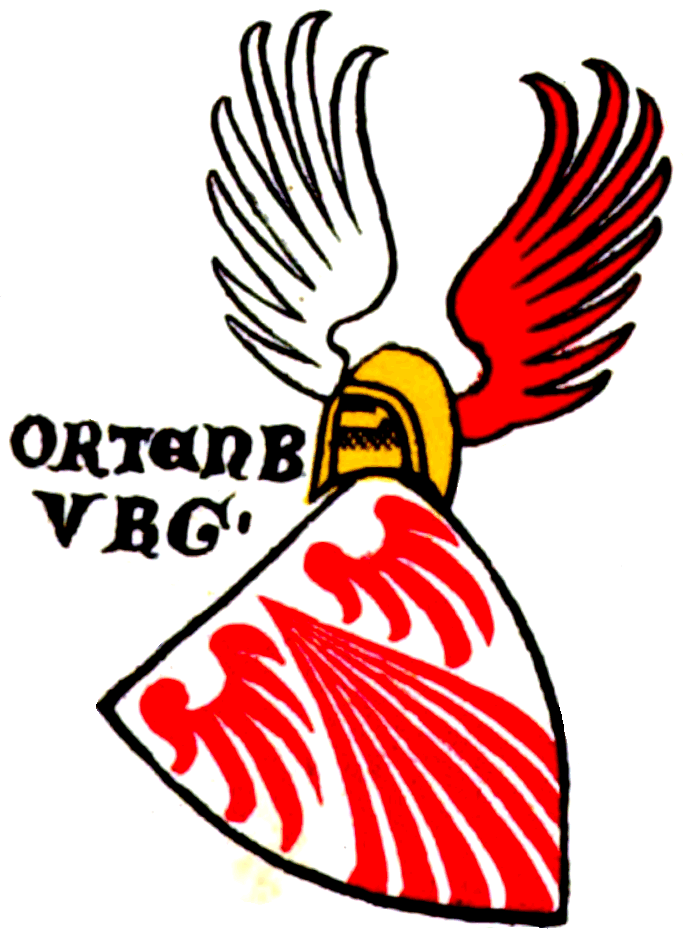|
Kočevje
Kočevje (; german: Gottschee; ''Göttscheab'' or ''Gətscheab'' in the local Gottscheerish dialect; it, Cocevie) is a city in the Municipality of Kočevje in southern Slovenia. It is the seat of the municipality. Geography The town is located at the foot of the Kočevski Rog karst plateau on the Rinža River in the historic Lower Carniola region. It is now part of the Southeast Slovenia Statistical Region. The Rinža River flows through the town. Lake Kočejve, a former open-pit coal mine, lies northeast of the town center. Climate Kočevje features a humid continental climate (''Dfb''/''Cfb''). Name Kočevje was attested in written sources in 1363 as ''Gotsche'' (and as ''Gotsew'' in 1386, ''Kotsche'' in 1425, and ''propre Koczeuiam'' in 1478). The name is derived from ''*Hvojčevje'' (from ''hvoja'' 'fir, spruce'), referring to the local vegetation. The initial ''hv-'' changed to ''k-'' under the influence of German phonology. Older discredited explanations inclu ... [...More Info...] [...Related Items...] OR: [Wikipedia] [Google] [Baidu] |
Municipality Of Kočevje
The Municipality of Kočevje (; sl, Občina Kočevje) is a municipality in southern Slovenia. The seat of the municipality is the city of Kočevje. Today it is part of the Southeast Slovenia Statistical Region. In terms of area, it is the largest municipality in Slovenia. History In 1247 Berthold, Patriarch of Aquileia granted the area around Ribnica within the imperial March of Carniola to the Carinthian counts of Ortenburg. When the counts received further estates on the wooded plateau down to Kostel on the Kolpa River in 1336 from the hands of Patriarch Bertram, they called for German-speaking settlers from Carinthia and Tyrol. These Germanic people became known as the Gottscheers, and their dialect, Gottscheerish. Thousands of Gottscheers, and others, were accused of sympathy for or collaboration with the Axis Powers during World War II (such as the Slovene Home Guard), after the war. They, and typically their entire families, were summarily executed, thrown into v ... [...More Info...] [...Related Items...] OR: [Wikipedia] [Google] [Baidu] |
Kočevski Rog
Kočevski Rog or Kočevje Rog (german: Hornwald) or simply Rog is a karstified plateau in the Kočevje Highlands above the Črmošnjice Valley in southeastern Slovenia. The plateau is part of the traditional Lower Carniola region of Slovenia and of the Dinaric Alps. The highest area is the central part, with the 1099-metre-high peak of Veliki Rog. The plateau is densely forested. The only ski slope in Lower Carniola, Rog-Črmošnjice (or Gače) also lies in the vicinity of Rog. The Gottscheers This area, known in German as Gottschee, was settled in the late 14th century by the Carinthian Counts of Ortenburg initially with colonists from the Ortenburg estates in Carinthia and Tyrol, and by other settlers who came from Austrian and German Dioceses of Salzburg, Brixen and Freising. The settlers cleared the vacant and heavily forested land, and established towns and rural villages. The area of Carniola that was to become Gottschee had been a strategic part of the Holy Roman Empi ... [...More Info...] [...Related Items...] OR: [Wikipedia] [Google] [Baidu] |
Rinža
The Rinža (German: Rinse, Rinnse) is a river of Slovenia. It is long and flows through Kočevje. It is the main watercourse of the Kočevje Polje and it is a losing stream. A few kilometers downstream of Kočevje, it goes subterranean. It emerges again as the Bilpa, a tributary of the Kolpa (Kupa). See also *List of rivers of Slovenia 300px, Map of river systems in Slovenia This is a list of rivers of Slovenia. There are 59 major rivers in Slovenia, altogether measuring about in length. The total length of all rivers in Slovenia is , which gives a river density of 1,33 ... References Rivers of Lower Carniola {{Slovenia-river-stub ... [...More Info...] [...Related Items...] OR: [Wikipedia] [Google] [Baidu] |
Slovenia
Slovenia ( ; sl, Slovenija ), officially the Republic of Slovenia (Slovene: , abbr.: ''RS''), is a country in Central Europe. It is bordered by Italy to the west, Austria to the north, Hungary to the northeast, Croatia to the southeast, and the Adriatic Sea to the southwest. Slovenia is mostly mountainous and forested, covers , and has a population of 2.1 million (2,108,708 people). Slovenes constitute over 80% of the country's population. Slovene, a South Slavic language, is the official language. Slovenia has a predominantly temperate continental climate, with the exception of the Slovene Littoral and the Julian Alps. A sub-mediterranean climate reaches to the northern extensions of the Dinaric Alps that traverse the country in a northwest–southeast direction. The Julian Alps in the northwest have an alpine climate. Toward the northeastern Pannonian Basin, a continental climate is more pronounced. Ljubljana, the capital and largest city of Slovenia, is geogr ... [...More Info...] [...Related Items...] OR: [Wikipedia] [Google] [Baidu] |
Southeast Slovenia Statistical Region
The Southeast Slovenia Statistical Region ( sl, Jugovzhodna Slovenija statistična regija) is a statistical region in southeast Slovenia. It is the largest statistical region. The development of this region is largely the result of industry (the auto industry, pharmaceuticals, and other light industry), which generated nearly half of the gross value added in the region in 2012. According to the latest available data for 2013, 94% of waste water in the region was treated before it was discharged from the public sewage system. This is significantly more than in Slovenia as a whole (78%). The expenditure on research and development (R&D), which amounted to 5.2% of the regional GDP in 2012, highlights the importance of R&D in the region. Businesses accounted for 90% of the sources of financing. The population's age structure in this region is favourable. In mid-2013 the value of the ageing index was 105.2, which means that the ratio between the population 65 or older and the population 1 ... [...More Info...] [...Related Items...] OR: [Wikipedia] [Google] [Baidu] |
Lower Carniola
Lower Carniola ( sl, Dolenjska; german: Unterkrain) is a traditional region in Slovenia, the southeastern part of the historical Carniola region. Geography Lower Carniola is delineated by the Ljubljana Basin with the city of Ljubljana to the northwest, by the Kolpa River and the border with Croatia with the Gorjanci Mountains to the south and southeast, by the Sava River to the north and northeast, and by Mount Krim, the Bloke Plateau, and the Potok Plateau ( sl, Potočanska planota) to the west. The southernmost region down to the border with Croatia on the Kolpa River is called White Carniola and usually considered part of Lower Carniola. Within the Kočevje Rog karst plateau, the mountains reach an elevation of up to . The historic centre of Lower Carniola is Novo Mesto, and other towns include Kočevje, Grosuplje, Krško, Trebnje, Mirna, Črnomelj, Semič, and Metlika. History In the 17th century, the Habsburg duchy of Carniola was internally divided into three admi ... [...More Info...] [...Related Items...] OR: [Wikipedia] [Google] [Baidu] |
Gottscheerish
Gottscheerish (''Göttscheabarisch'',Maridi Tscherne: Wörterbuch Gottscheerisch-Slowenisch. Einrichtung für die Erhaltung des Kulturerbes Nesseltal, Koprivnik/Nesseltal 2010. german: Gottscheerisch, sl, kočevarščina) is an Upper German dialect which was the main language of communication among the Gottscheers in the enclave of Gottschee, Slovenia, before 1941. It is occasionally referred to as Granish or Granisch in the United States (< German ''Krainisch'' ' Carniolan'), a term also used for Slovene. Today there are only a few speakers left in Slovenia and around the world. Language history Gottscheerish belongs to within the[...More Info...] [...Related Items...] OR: [Wikipedia] [Google] [Baidu] |
Grafschaft Ortenburg
The Counts of Ortenburg (german: Grafen von Ortenburg) were a comital family in the mediaeval Duchy of Carinthia. Though they had roots in Bavarian nobility, an affiliation with the Imperial Counts of Ortenburg, a branch line of the Rhenish Franconian House of Sponheim, is not established.Hausmann, Friedrich (1994). "Die Grafen zu Ortenburg und ihre Vorfahren im Mannesstamm, die Spanheimer in Kärnten, Sachsen und Bayern, sowie deren Nebenlinien" in ''Ostbairische Grenzmarken - Passauer Jahrbuch für Geschichte Kunst und Volkskunde''. Nr. 36, Passau 1994. History Little is known about the reasons the Ortenburgs settled in the Carinthian Lurngau. No charters are available on the creation of the Ortenburg Castle on the northern slope of Mt. Goldeck above the village of Baldramsdorf, nor about the manner in which the Ortenburgs obtained their property. In 1072, one Adalbert of Ortenburg, probably a younger son of Count Hartwig II of Grögling-Hirschberg (d. 1068/69), served ... [...More Info...] [...Related Items...] OR: [Wikipedia] [Google] [Baidu] |
Carniola
Carniola ( sl, Kranjska; , german: Krain; it, Carniola; hu, Krajna) is a historical region that comprised parts of present-day Slovenia. Although as a whole it does not exist anymore, Slovenes living within the former borders of the region still tend to identify with its traditional parts Upper Carniola, Lower Carniola (with the sub-part of White Carniola), and to a lesser degree with Inner Carniola. In 1991, 47% of the population of Slovenia lived within the borders of the former Duchy of Carniola. Overview A state of the Holy Roman Empire in the Austrian Circle and a duchy in the hereditary possession of the Habsburgs, later part of the Austrian Empire and of Austria-Hungary, the region was a crown land from 1849, when it was also subdivided into Upper Carniola, Lower Carniola, and Inner Carniola, until 1918. From the second half of the 13th century, its capital was Ljubljana (Laibach). Previous overlords of Carniola had their seats in Kranj (Krainburg) and Kamnik (Stein), wh ... [...More Info...] [...Related Items...] OR: [Wikipedia] [Google] [Baidu] |
Bertram Of St
Bertram may refer to: Places *Bertram, Western Australia, a suburb of Perth, Australia * Bertram, Iowa, United States, a city *Bertram, Texas, United States, a city *Bertram Building, a historic building in Austin, Texas *Bertram Glacier, Palmer Land, Antarctica Other uses *Bertram (name), a list of people and fictional characters with the given name or surname *Operation Bertram, an Allied deception operation leading up to the Second Battle of El Alamein *Bertram-class air-sea rescue boat, a Royal Australian Navy class of two vessels disposed of in 1988 *Bertram Hall (Radcliffe College), a dormitory building *Bertram Yacht, a subsidiary of the Ferretti Group See also *Bertrams, a UK book wholesaler *Bertrams, Gauteng Bertrams is a suburb of Johannesburg, South Africa. It is a small suburb found on the eastern edge of the Johannesburg central business district (CBD), tucked between the suburbs of New Doornfontein and Lorentzville, with Troyeville to the sou ..., a suburb of J ... [...More Info...] [...Related Items...] OR: [Wikipedia] [Google] [Baidu] |
Habsburg Monarchy
The Habsburg monarchy (german: Habsburgermonarchie, ), also known as the Danubian monarchy (german: Donaumonarchie, ), or Habsburg Empire (german: Habsburgerreich, ), was the collection of empires, kingdoms, duchies, counties and other polities that were ruled by the House of Habsburg, especially the dynasty's Austrian branch. The history of the Habsburg monarchy can be traced back to the election of Rudolf I as King of Germany in 1273 and his acquisition of the Duchy of Austria for the Habsburg in 1282. In 1482, Maximilian I acquired the Netherlands through marriage. Both realms passed to his grandson and successor, Charles V, who also inherited the Spanish throne and its colonial possessions, and thus came to rule the Habsburg empire at its greatest territorial extent. The abdication of Charles V in 1556 led to a division within the dynasty between his son Philip II of Spain and his brother Ferdinand I, who had served as his lieutenant and the elected king of Hungary and ... [...More Info...] [...Related Items...] OR: [Wikipedia] [Google] [Baidu] |





